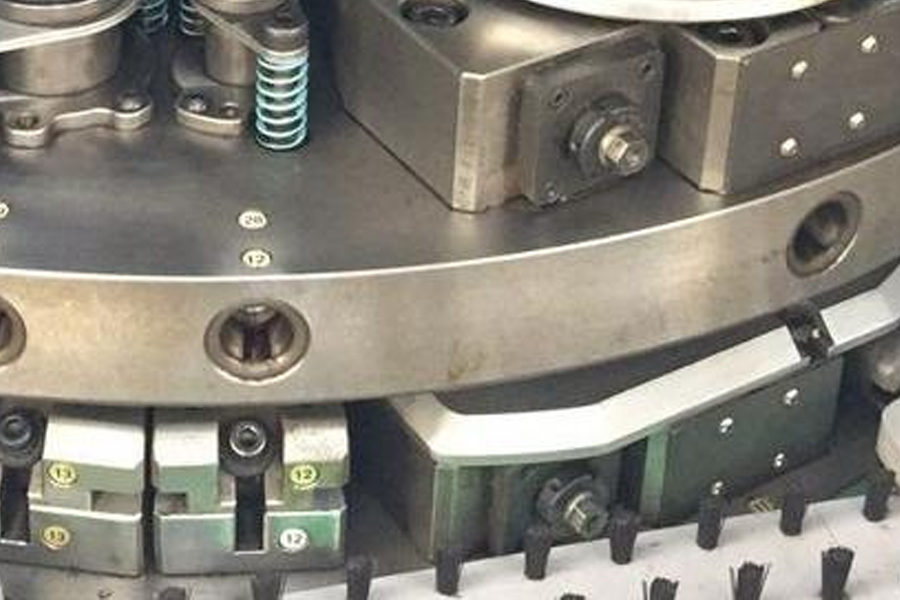After nearly ten years of development, the manufacturing technology of CNC lathes for inclined beds has produced many lathes with different structures. However, from the perspective of development trends, there are two main trends:
First, the scale characteristics of lathe machining are developing in extreme directions
The machining accuracy of modern inclined bed CNC lathes is always an important indicator to measure the development level of lathe technology. The effect of reflecting the machining accuracy is now not limited to dimensional accuracy, shape accuracy and surface roughness, but also reflected in the processing technology of microstructures. On the one hand, the locally processed shape scale features are developing in the subtle direction, and on the other hand, the overall shape of the processing is developing in the direction of large size.
Driven by technological innovation, a large number of parts with microstructures is an important task facing the development of precision lathes. The application of micro-structured parts is very extensive, such as solar power components, mobile phone light guide plates, LCD brightness enhancement films, highway display panels, fly-eye lenses, diffraction gratings, sensor elements, binary optical elements, micro lenses, etc. The emergence of microstructures has brought the processing of lathes into new fields.
The emergence of microstructures poses new challenges for lathe machining. The lathe’s motion accuracy, smoothness of motion, and damping characteristics all have new requirements. In addition, the processing technology, lathe tools, and lathe accessories must also undergo new changes. New optical processing technologies, such as fast knife servo (FTS), planing, chiseling, and deterministic grinding, are emerging in the development of micromachining technology. The micro-structured lathe used for processing large cylindrical surfaces, round end surfaces, and flat surfaces has become a product of market competition. Nano-imprint replication technology has also been developed and applied accordingly.
The size of the microstructure varies from a few hundred microns to a few microns, but the quality of the processed surface of the microstructure is at the nanometer level. The size of the integral parts with microstructures varies from millimeters to several meters.
In the field of microstructure manufacturing equipment, Japan, Germany, and the United States have developed rapidly, and many new lathe products have appeared. Typical companies include: Toshiba Machinery, FANUC, Fujitsu, Kugler, Precitech, Nanotechnology, etc.
It is worth mentioning that micro-hole precision cutting has also developed rapidly during this period. The pyramid ultra-precision lathe of Cohen, Germany, can use the same tool to process tens of thousands of micro-diameters with a diameter of no more than 0.1mm hole.
Second, the application of lathe equipment is developing to meet the requirements of intelligent manufacturing
At present, intelligent manufacturing has become a new trend in the international manufacturing field. Since Germany proposed the “Fourth Industrial Revolution” (Industrie 4.0) at the 2011 Hannover Fair, it has now entered the implementation phase. The goal of the “Fourth Industrial Revolution” is Intelligente Fabrik (Smart Factory). In 2013, the United States started the re-industrialization of the intelligent era with the theme of manufacturing return. Based on flexible manufacturing, Japan has formed today’s relatively mature intelligent manufacturing technology. China’s current manufacturing labor costs continue to rise, and the “labor shortage” in some regions has forced manufacturing companies to transition to intelligence.
The general trend of intelligent manufacturing technology requires that lathes must adapt to their use requirements. From the perspective of the development of intelligent manufacturing technology in the world, the most typical application feature is the high reliability required for various configurations. As the most basic component of intelligent manufacturing, the reliability of lathe equipment has become the main evaluation index.
The intelligent manufacturing technology can be regarded as a technology developed on the basis of the previous two generations of flexible manufacturing technology. The first generation of flexible manufacturing system was produced in the 1980s, and its reliability measurement feature is that it can run continuously for 24 hours, and the second generation is produced in the 1990s and can run continuously for 72 hours. In today’s intelligent manufacturing system, it requires continuous operation for 720 hours. Therefore, lathe equipment that can operate uninterruptedly with high reliability for a long time has become another development trend.
Development history of intelligent manufacturing
In the development of the third generation of intelligent manufacturing, the cost of labor has been declining, and human participation in intelligent manufacturing is very small, but the complexity of robots has increased significantly. In the development of the second generation, the robot can only handle the fixed path, but the third generation robot can not only sense the workpieces placed disorderly through the visual sensor, but also make the grasping actions of different paths by judging, but also perceive the assembly process. The parts are in the state of alignment, and cooperate with the intelligent fixture to replace the work that can only be done by people in the past.
Intelligent manufacturing also puts forward requirements for other aspects of lathe adaptability, such as: able to cooperate with robots with sensors and sensory alignment assembly, and can communicate remotely.
There are many development trends of lathes, such as multi-functional compounding trend, reconfigurable trend, low energy consumption and environmental protection trend, etc., which will not be introduced here.
The above two major trends present different technical characteristics. The main outstanding feature of the first major trend is the cutting edge and innovation of the technology, and the emphasis is on the high-end technology. The second major trend is the maturity of the technology and the reflection of a country. The foundation of manufacturing.
